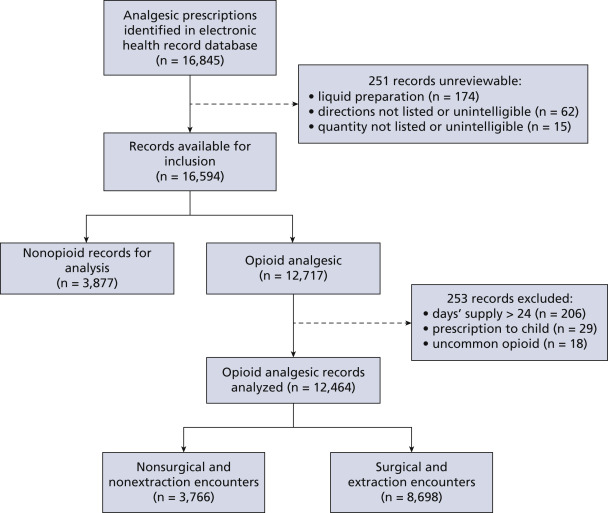Background
Nonopioids provide sufficient analgesia with less risk after most dental procedures,
but opioid prescriptions are still common. This study analyzed opioid prescribing
characteristics on the basis of patient demographics and procedure types.
Methods
The authors conducted a secondary analysis of an existing data set of opioid prescriptions
issued from 2013 through 2018 from a college of dentistry in central Appalachia. Opioid
prescriptions for young children or liquids were excluded. The authors analyzed prescriptions
according to patient age group and sedation level required for surgical procedures.
Results
Of 12,464 opioid prescriptions analyzed, 70% were written after extractions or surgical
procedures. More than one-half (57.3%) were written for patients younger than 45 years.
Adolescent and young adult (AYA) patients received prescriptions of higher quantities
(mean [standard deviation], 20.9 [6.4] pills; 95% confidence interval, 20.6 to 21.1)
and of longer durations (mean [standard deviation], 3.3 [1.5] days; 95% confidence
interval, 3.2 to 3.4) than other groups (
P < .001; 1-way analysis of variance).
Conclusions
AYA patients received more opioids than older patients after dental procedures, which
is concerning given the high risk associated with AYA opioid exposure. Faculty in
colleges of dentistry should educate students and residents on the risks and benefits
of opioid therapy as well as alternative analgesics and via exemplifying appropriate
prescribing behavior.
Practical Implications
AYA patients represent a seemingly unidentified high-risk age group for dentists.
Dentists who perform invasive procedures must examine carefully opioid prescription
necessity and prescribe in a manner consistent with best practices.


